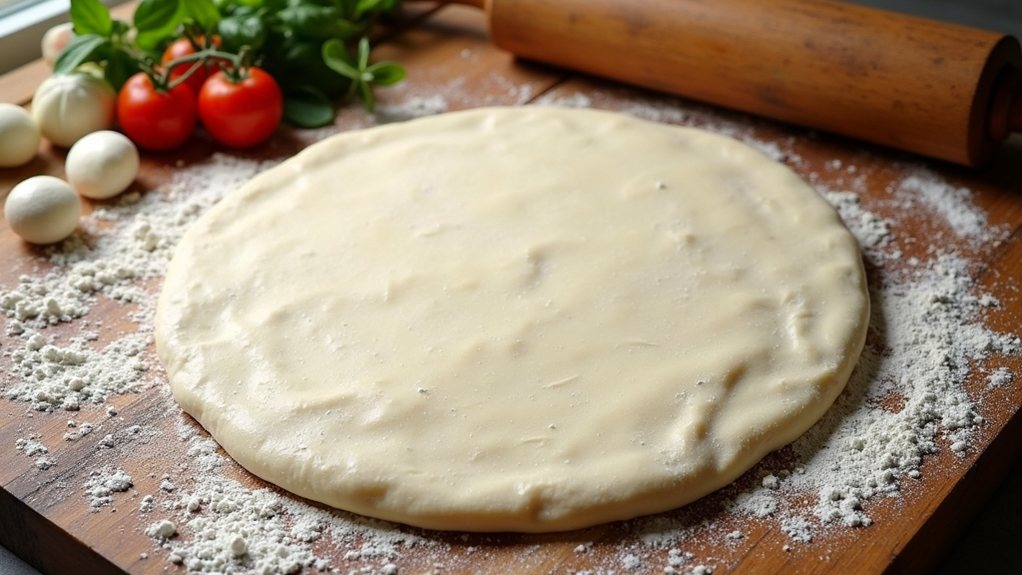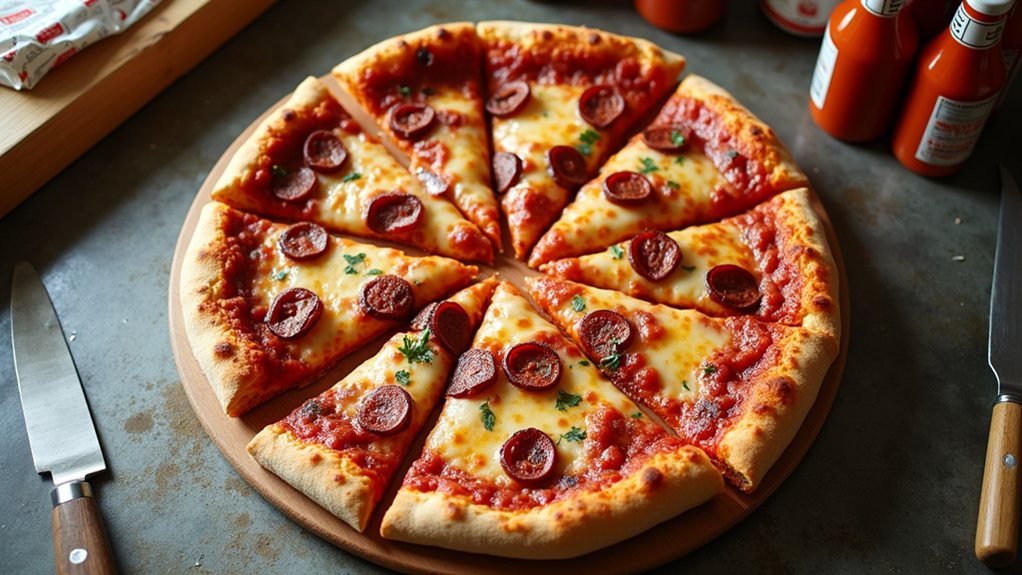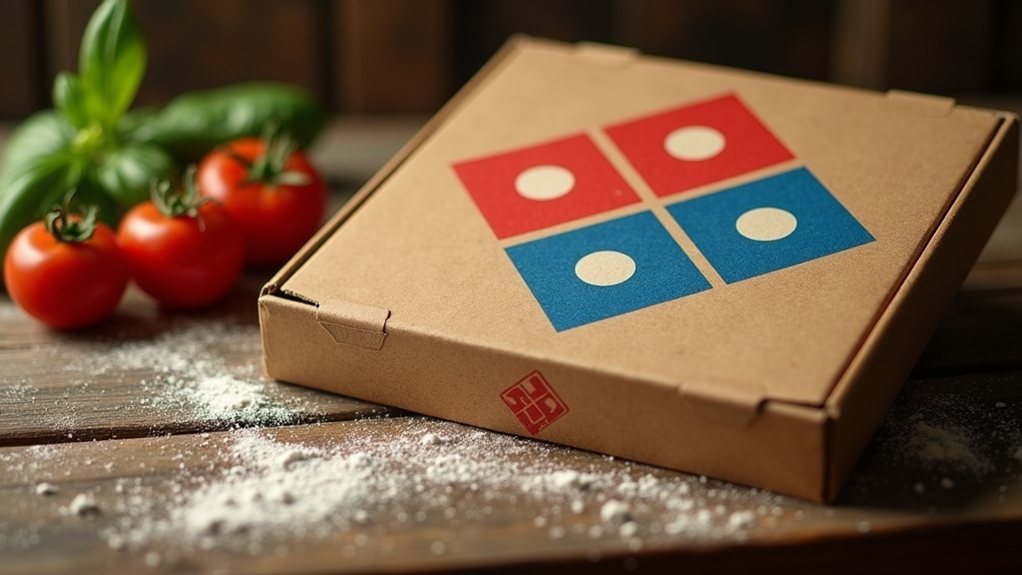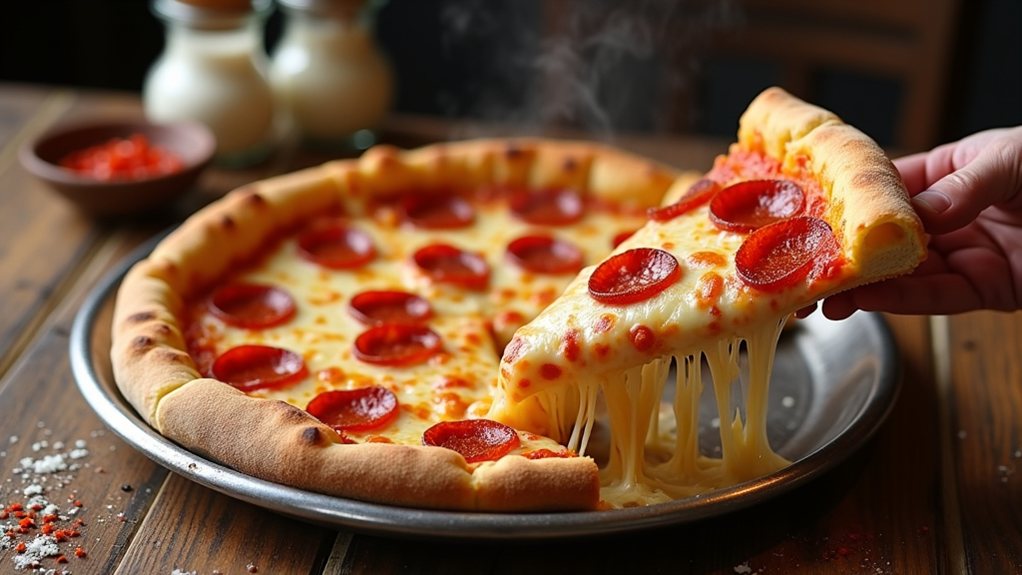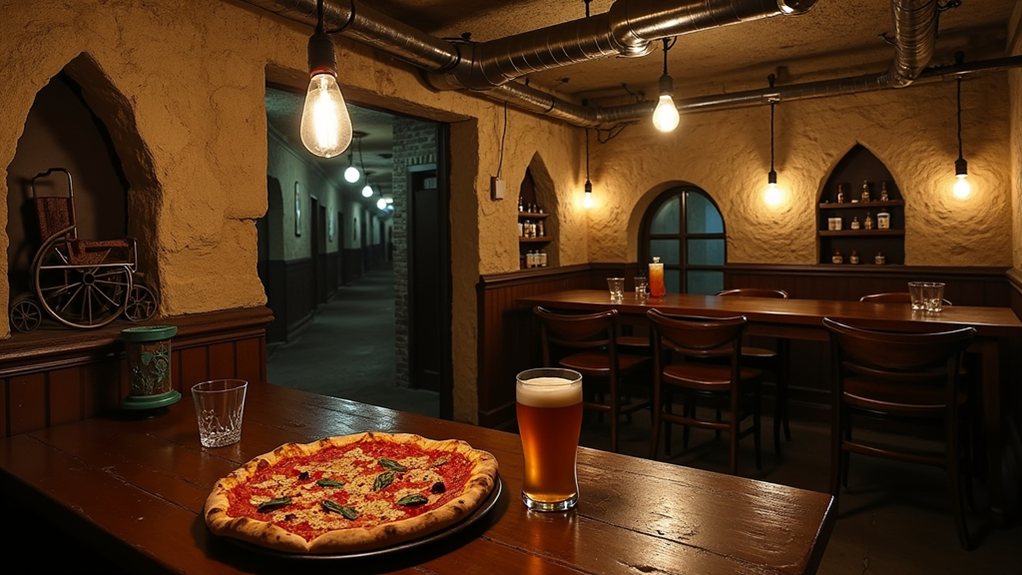Making homemade pizza dough transforms an ordinary kitchen into a creative family workshop. The process combines simple science, hands-on learning, and artistic expression as parents and children work together to measure, mix, and knead their way to the perfect crust. While store-bought options offer convenience, they cannot match the satisfaction of watching dough rise through the power of active yeast, nor the anticipation of shaping a personalized pizza creation from scratch.
The Joy of Making Pizza as a Family
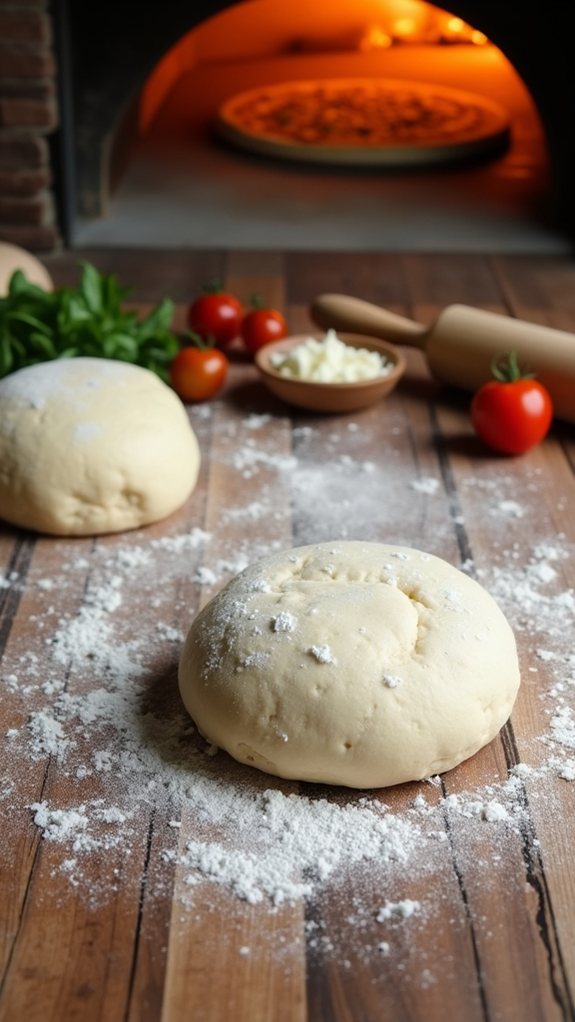
Making pizza at home presents a wonderful opportunity for families to bond while creating something delicious together, as the interactive nature of pizza preparation invites participation from all ages.
Children can help measure ingredients and knead the dough, while adults guide the process and handle the more challenging tasks.
The versatile dough recipe allows family members to express creativity through personalized toppings and unique flavor combinations.
Beyond just cooking, this shared activity creates lasting memories and teaches valuable kitchen skills, making pizza night an educational experience that transforms routine meal preparation into an engaging family adventure.
The rising process time of one hour gives families a perfect opportunity to spend quality time together while waiting for the dough to double in size.
Essential Ingredients for Perfect Pizza Dough

The foundation of any great pizza lies in a handful of simple yet crucial ingredients that work together to create the perfect dough.
Great pizza starts with mastering the fundamentals – a few key ingredients working in harmony to create exceptional dough.
The process begins with active dry yeast activated in warm water between 100-110 degrees, combined with a teaspoon of sugar to feed the microscopic organisms.
The heart of the dough comes from 2 cups of flour, whether all-purpose, bread flour, or authentic Italian 00 variety, while salt improves flavor and olive oil adds richness.
These basic components transform into an elastic, versatile base ready for endless creative possibilities.
For optimal results, the dough needs resting for at least an hour until it doubles in size before shaping and baking.
Step-by-Step Dough Preparation
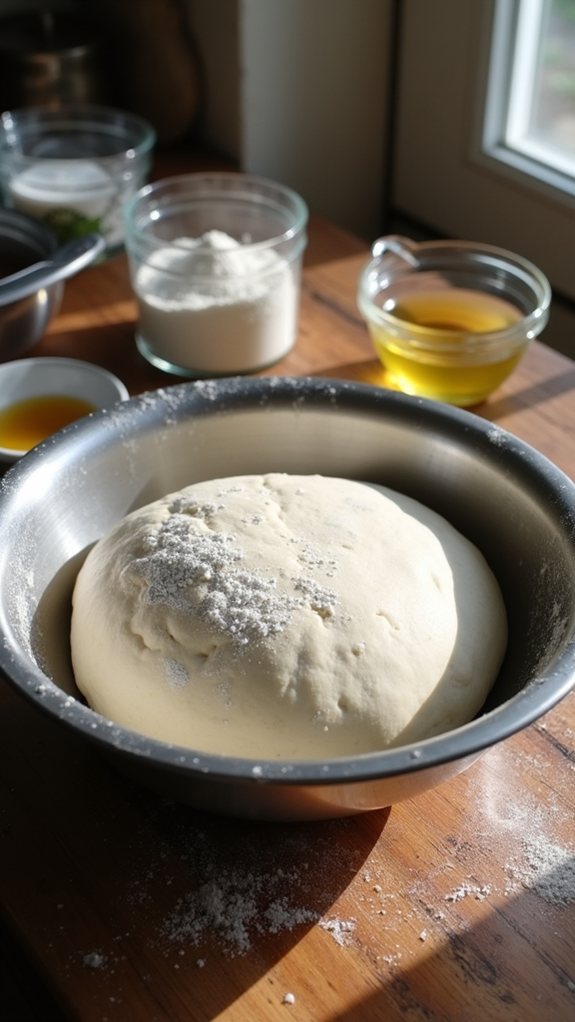
Crafting perfect pizza dough begins with activating the yeast in warm water between 100-110 degrees Fahrenheit, allowing it to bloom with a teaspoon of sugar for 5-7 minutes until foamy.
While the yeast awakens, combine flour, salt, sugar, and olive oil in a mixing bowl, creating a foundation for the dough's structure and flavor.
Mix ingredients until the dough comes together, then knead by hand or with a stand mixer until elastic.
Transfer the smooth dough to an oiled bowl, cover with a damp cloth, and let it rise in a warm spot for an hour until doubled in size.
Using 00 pizza flour delivers the perfect chewy texture and authentic Neapolitan-style crust structure.
Mastering the Rising Process

Successful pizza dough rising depends on creating excellent conditions that allow yeast to work its magic effectively. The key factors include maintaining proper temperature, humidity, and timing while providing the dough adequate space to expand.
| Condition | Ideal Range |
|---|---|
| Temperature | 75-85°F |
| Humidity | 70-80% |
| Time | 60-90 minutes |
| Space | Double volume |
For best results, place the covered dough in a warm, draft-free spot and let it rise until doubled in size, approximately one hour. A simple test for readiness involves gently pressing two fingers into the dough – if the indentation remains, the dough has finished its initial rise.
Creating Your Pizza Base

Once your dough has completed its initial rise, establishing the perfect pizza base requires careful attention to shape and thickness.
After gently punching down the dough to release trapped air, choose between a pizza stone or baking sheet as your cooking surface.
With lightly floured hands or a rolling pin, spread the dough into a circular shape, allowing it to relax between stretches for easier manipulation.
Create a slightly thicker edge for the crust, and consider adding a stuffed crust by rolling cheese into the border.
Remember to avoid overworking the dough, which can make it tough.
Topping Tips and Techniques
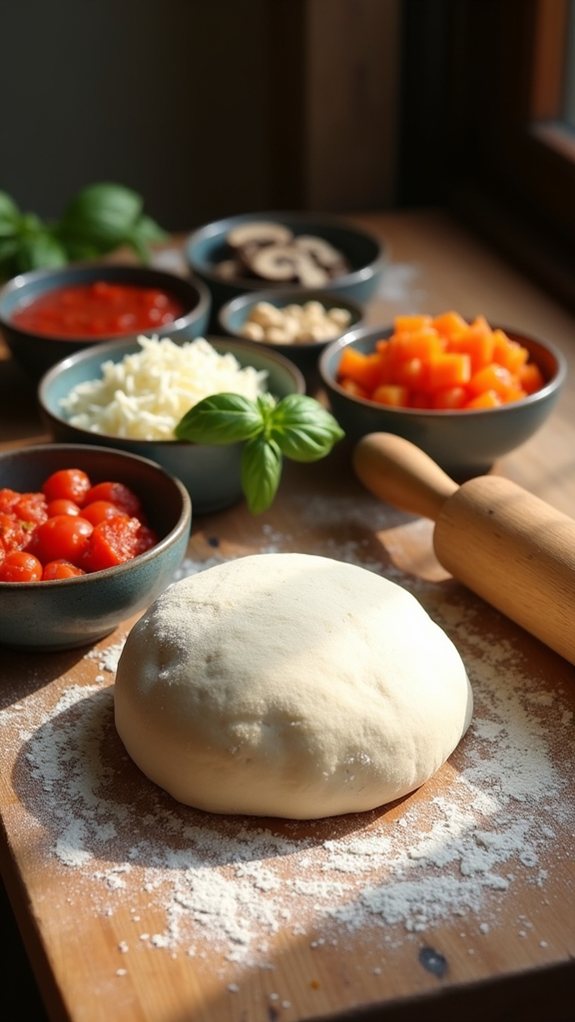
The art of topping a pizza requires a thoughtful balance between flavor and texture, starting with the foundational layer of sauce. Spreading sauce from the center outward, while leaving a border for the crust, prevents the dreaded soggy middle that can plague homemade pizzas.
Next comes the cheese layer, traditionally mozzarella, distributed evenly to guarantee consistent melting. For additional toppings, less is often more, as overloading can lead to uneven cooking.
Strategic placement matters: heavier ingredients should be scattered closer to the crust, while delicate toppings can grace the center, creating a harmonious blend of flavors.
Baking Your Homemade Pizza to Perfection
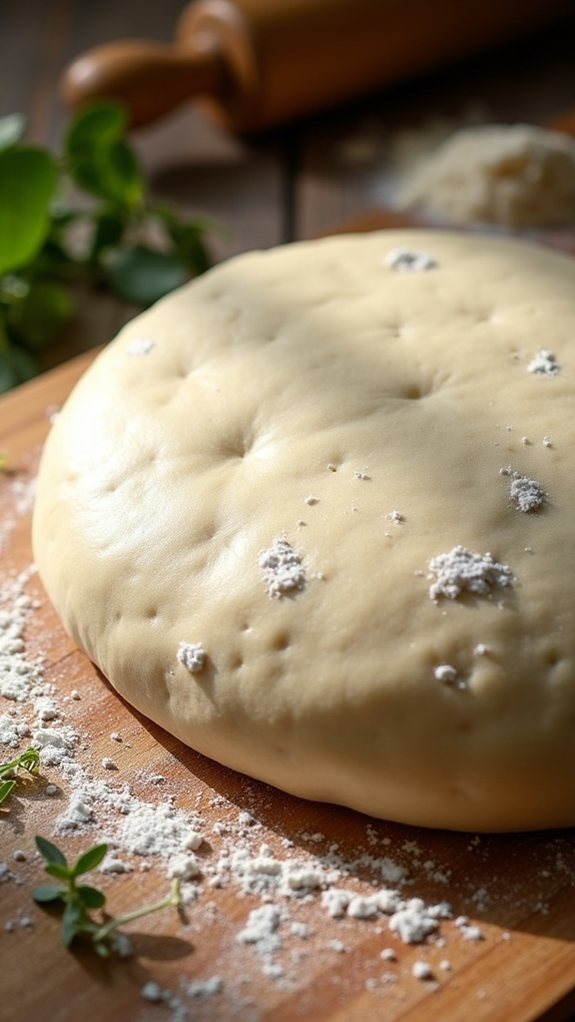
Baking homemade pizza requires precise timing and temperature control to achieve the ideal balance of crispy crust and melted toppings.
The oven should be preheated to 450 degrees Fahrenheit, ensuring consistent heat distribution throughout the baking process. For best results, place the pizza on a preheated baking tray or pizza stone and bake for 12-15 minutes, monitoring the progress to prevent burning.
The pizza is ready when the crust turns golden brown and the cheese bubbles with a slight caramelization.
These visual cues, combined with the irresistible aroma wafting from the oven, signal that culinary success is moments away.
FAQs
Can I Freeze Pizza Dough, and How Long Will It Last?
Pizza dough can be frozen for up to three months when stored in airtight containers or freezer bags. Prior to use, thaw overnight in the refrigerator and let warm to room temperature.
Why Did My Pizza Dough Turn Out Tough and Chewy?
Tough, chewy pizza dough often results from overworking the dough. Breaking free from excessive kneading and allowing proper rest time lets gluten relax, creating that perfect, tender texture everyone craves.
Is It Possible to Make Gluten-Free Pizza Dough With This Recipe?
This recipe requires modification for gluten-free options. Substitute regular flour with gluten-free flour blend, add xanthan gum if not included, and expect a slightly different texture and handling process.
What's the Best Way to Reheat Leftover Homemade Pizza?
Reheating pizza works best in a preheated 375°F oven for 10 minutes on a baking sheet. A pizza stone offers ideal results, while avoiding microwaves preserves the crust's desired texture.
Can I Use Instant Yeast Instead of Active Dry Yeast?
Instant yeast can replace active dry yeast in pizza dough. One can use the same amount, but skip the proofing step since instant yeast activates faster in the flour mixture.
